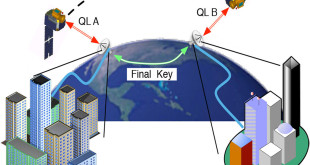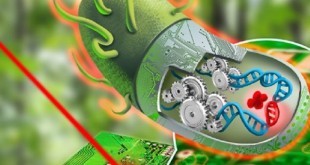Quantum key distribution (QKD), establishes highly secure keys between distant parties by using single photons to transmit each bit of the key. A unique aspect of quantum cryptography is that Heisenberg’s uncertainty principle ensures that any attempts to intercept and measure quantum transmissions, will introduce an anomalously high error rate …
Read More »US DOD leverages synthetic biology expertise to address future warfighter needs
Synthetic biology represents an intersection of biology and engineering that focuses on the modification or creation of novel biological systems. The current state of synthetic biology is mostly the result of research in biology, engineering, computer science, and information technology dating back to the mid-1900s. Synthetic biology has drawn increasing …
Read More »Aerogels, world’s lightest solid, has applications in Smart buildings, Medical, Aerospace and Military
Aerogels are among the lightest materials in the world and are highly porous with strong absorption capacity and low thermal conductivity which make them highly suitable for applications oil-spill cleaning, personal care products like diapers and heat, and sound insulation. “Aerogel is what NASA uses to insulate the space …
Read More »DARPA’s HI-MEMS (Hybrid Insect Micro-Electro-Mechanical Systems) created cyborg insects for military micro air vehicles missions
In 2006 the US Defense Advanced Research Projects Agency (Darpa) asked America’s scientists to submit “innovative proposals to develop technology to create insect-cyborgs.” The Hybrid Insect Micro-Electro-Mechanical Systems (HI-MEMS) program, also known as the cybug program, was a proposal from the Defense Advanced Research Projects Agency (DARPA) to encourage the …
Read More »DARPA World Modelers to build Early Warning and Response System to rapidly build and analyze models of conflict and security
Early Warning and Response System (EWRS) systems aim to: Identify the causes of a conflict, anticipate their outbreak, and mitigate their impact. The EWRS are mechanisms for preventing and addressing conflicts that focus on the systematic collection, processing and analysis of information (quantitative or qualitative) about conflict situations for the …
Read More »Curved image sensors for better resolution, and wide field of view cameras for cell phones to Miniature UAVs
Smartphone camera technology is growing in leaps and bounds in the past couple of years and continues to be a major point to differentiate their products. More and more technologies are being incorporated including larger sensors, better lenses, ultra-thin lens, optical image stabilization technologies, dual camera optical zoom technology that …
Read More »Scientists exploring Magnetic nanoparticles for Biomedical, neuromorphic computing , Holography and LIDAR to destruction of Warfare Agents
Magnetic nanoparticles are nanomaterials consist of magnetic elements, such as iron, nickel, cobalt, chromium, manganese, gadolinium, and their chemical compounds. In most cases, the magnetic nanoparticles range from 1 to 100 nm in size and can display superparamagnetism. Magnetic nanoparticles have unique properties such as extremely large surface area per …
Read More »Development of Next generation Infrared Focal Plane Arrays improving Military’s Night Fighting Capability
Night vision devices are becoming essential equipment for night driving, night flying and night surveillance, wildlife observation and search and rescue missions. Night Vision has become essential capability for ground forces in modern warfare as well as for counter terrorist operations.According to Industry ARC’s report on Night vision devices, the …
Read More »DARPA RFMLS exploiting Machine Learning to RF domain for Spectrum sharing and Military IOT systems security
The field of AI has experienced a renaissance fueled by modern data-driven Machine Learning (ML) techniques. In contrast to the expert-engineered processing and decision making of the previous generation of AI, ML-based techniques are able to learn to perform a task from raw sensory input. ML techniques have advanced the fields …
Read More »Internet of Living Things (IoLT), or “Internet of Bodies,” shall save lives and improve health while create new cybersecurity, and privacy concerns
The Internet-of-Things is an emerging revolution in the ICT sector under which there is shift from an “Internet used for interconnecting end-user devices” to an “Internet used for interconnecting physical objects that communicate with each other and/or with humans in order to offer a given service”. This includes everything from …
Read More » International Defense Security & Technology Your trusted Source for News, Research and Analysis
International Defense Security & Technology Your trusted Source for News, Research and Analysis









